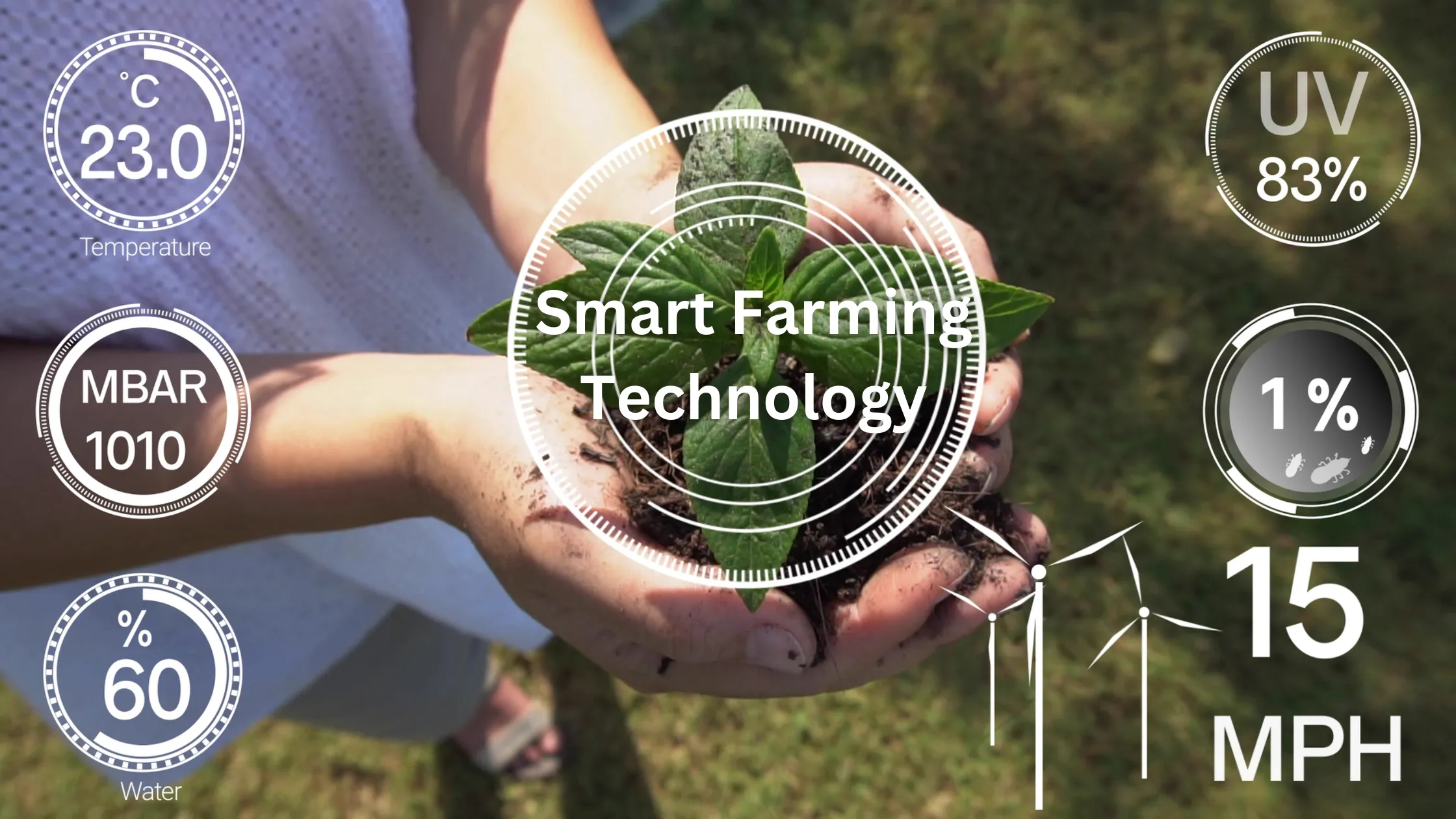Precision Agriculture
Precision agriculture, enabled by smart farming technology, goes beyond traditional farming practices by leveraging data-driven insights. Smart sensors deployed in the fields collect information on soil moisture, nutrient levels, and crop health.
Drones equipped with advanced imaging systems provide real-time visualizations of crop conditions. Farmers can access this data remotely, enabling them to make informed decisions about irrigation, fertilization, and pest management. The result is not only increased efficiency but also a reduction in the use of resources, promoting sustainability at its core.
IoT Integration
The Internet of Things (IoT) plays a pivotal role in connecting various elements of the farm ecosystem. Soil sensors, weather stations, and automated machinery communicate seamlessly, creating a network that optimizes farming operations.
This interconnected web of devices facilitates timely interventions, allowing farmers to respond swiftly to changes in environmental conditions. The integration of IoT in organic farming is a testament to the industry’s commitment to sustainability through technological innovation.
Vertical Farming and Controlled Environment Agriculture (CEA)
-
Resource Efficiency
Vertical farming and Controlled Environment Agriculture offer a paradigm shift in resource utilization. By stacking crops in vertical layers, these systems maximize space, allowing for increased yields without expanding the physical footprint of the farm.
Furthermore, the controlled environment minimizes the need for pesticides and herbicides, fostering a more organic and eco-friendly approach to cultivation. This innovation is particularly beneficial in urban areas where available land is limited, creating opportunities for local and sustainable food production.
-
Year-Round Production
The ability to control environmental factors such as light, temperature, and humidity enables year-round production. This not only ensures a consistent food supply but also reduces the reliance on seasonal factors that can affect traditional farming practices.
The integration of vertical farming and CEA represents a step toward agricultural resilience, addressing the challenges posed by climate change and contributing to a more stable and predictable food system.
3. Microbial Farming: Harnessing the Power of Microorganisms
-
Soil Health and Nutrient Cycling
Microbial farming emphasizes the importance of a thriving soil microbiome. Beneficial bacteria and fungi play crucial roles in enhancing soil structure, nutrient availability, and overall fertility.
These microorganisms form symbiotic relationships with plant roots, facilitating nutrient absorption and creating a natural defense against pathogens. The result is not only healthier plants but also improved long-term soil health, reducing the need for external inputs and fostering a self-sustaining ecosystem.
-
Reduced Environmental Impact
Unlike conventional farming practices that often rely on synthetic fertilizers and pesticides, microbial farming aims to minimize the environmental impact of agriculture. By harnessing the power of naturally occurring microorganisms, farmers can cultivate crops without compromising soil integrity or contributing to water pollution. This approach aligns with the principles of organic farming, emphasizing the importance of working with nature rather than against it.
4. Agroecology: Merging Tradition with Innovation
-
Biodiversity Promotion
Agroecology integrates ecological principles with traditional farming knowledge to create farming systems that mimic natural ecosystems. This approach prioritizes biodiversity, encouraging the coexistence of various plants, animals, and microorganisms.
Diverse crop rotations and intercropping practices enhance ecosystem resilience, making agroecological farms less susceptible to pests and diseases. The result is a more balanced and sustainable agricultural ecosystem that can adapt to changing environmental conditions.
-
Community Engagement
Agroecology often involves close collaboration with local communities. By integrating traditional knowledge and practices, farmers can create resilient and culturally relevant agricultural systems.
This approach not only strengthens community ties but also empowers farmers with the tools and knowledge needed to navigate the challenges of sustainable agriculture. Agroecology represents a holistic and community-centered approach to farming that goes beyond the boundaries of individual fields.
5. Blockchain in Organic Certification: Ensuring Transparency
a. Immutable Recordkeeping
Blockchain technology provides an immutable and transparent record of every step in the organic farming supply chain. From seed sourcing to distribution, every transaction is recorded on a decentralized ledger. This level of transparency ensures the authenticity of organic products, giving consumers confidence in the integrity of their food choices. Farmers, in turn, benefit from a streamlined and secure certification process.
b. Supply Chain Traceability
Blockchain’s ability to provide supply chain traceability is a game-changer for organic farming. Consumers can trace the journey of their food from the farm to the table, gaining insights into each stage of production.
This not only instills trust but also allows consumers to make more informed choices about the products they support. Blockchain’s role in organic certification extends beyond a technological novelty; it is a powerful tool for fostering accountability and ethical practices in the organic farming industry.
Conclusion
Organic farming’s journey into the future is marked by a convergence of traditional wisdom and cutting-edge innovation. From harnessing the power of microorganisms to embracing smart farming technology, these innovations are redefining the possibilities of sustainable agriculture.
As we celebrate the organic farming 2.0 era, the commitment to environmental stewardship, resource efficiency, and community engagement shines through. With each technological leap and ecological insight, organic farming is not only evolving but also laying the groundwork for a resilient and regenerative food system. The journey continues, with organic farmers at the forefront of a sustainable agricultural revolution. Stay tuned for more breakthroughs as we cultivate a greener and more sustainable future.

